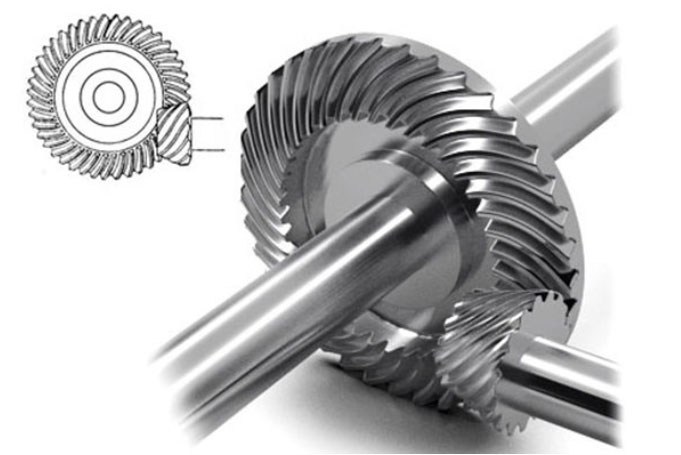Hypoid gear geometry plays a crucial role in optimizing performance and load capacity. The unique shape of hypoid gears, with their offset axes and hyperbolic profiles, offers several advantages. Here are some key aspects of hypoid gear geometry that contribute to their performance optimization:

- Offset Axes: Hypoid gears have non-intersecting and non-parallel axes, resulting in an offset between the driving and driven shafts. This offset allows for a larger gear diameter while maintaining a compact design. The increased gear diameter translates to a higher torque capacity and improved load-carrying capability.
- Hyperbolic Profile: The teeth of hypoid gears have hyperbolic profiles instead of the involute profiles found in spur and helical gears. The hyperbolic shape facilitates smooth rolling contact and provides a larger contact area compared to other gear types. This larger contact area distributes the load more evenly, reducing stress concentrations and improving load-carrying capacity.
- Tooth Surface Modifications: Hypoid gears often employ surface modifications to further enhance their performance. These modifications include profile crowning, tip relief, and flank modifications. Profile crowning ensures proper tooth engagement and load distribution, while tip relief reduces interference and minimizes contact stresses. Flank modifications optimize tooth contact patterns, reducing noise and improving gear meshing efficiency.
- Axial Offset and Axial Thrust: The axial offset of hypoid gears introduces an axial thrust component during operation. This axial thrust is beneficial for applications where thrust forces need to be accommodated, such as in automotive differentials or gearboxes. Careful consideration of the axial thrust and its effects on the gear system is necessary for optimizing performance and ensuring proper load distribution.
- Gear Ratio and Tooth Helix Angle: The gear ratio and tooth helix angle are critical parameters in hypoid gear geometry. The gear ratio determines the speed and torque relationship between the driving and driven shafts. The tooth helix angle influences the smoothness of tooth engagement and the magnitude of the sliding action during gear meshing. Proper selection of these parameters is essential for achieving the desired performance characteristics.
To optimize the performance and load capacity of hypoid gears, a combination of design considerations, material selection, lubrication, and manufacturing processes is required. Advanced simulation and analysis techniques, such as finite element analysis (FEA) and computer-aided design (CAD), can aid in predicting gear behavior, optimizing gear geometry, and validating the design before manufacturing.
It is worth noting that hypoid gears pose challenges in terms of manufacturing complexity, precision requirements, and specific gear tooth contact conditions. However, when properly designed and manufactured, hypoid gears can deliver high torque capacity, improved load distribution, low noise levels, and long service life. They are particularly advantageous in applications that require high torque transmission, compact design, and efficient power transfer.
